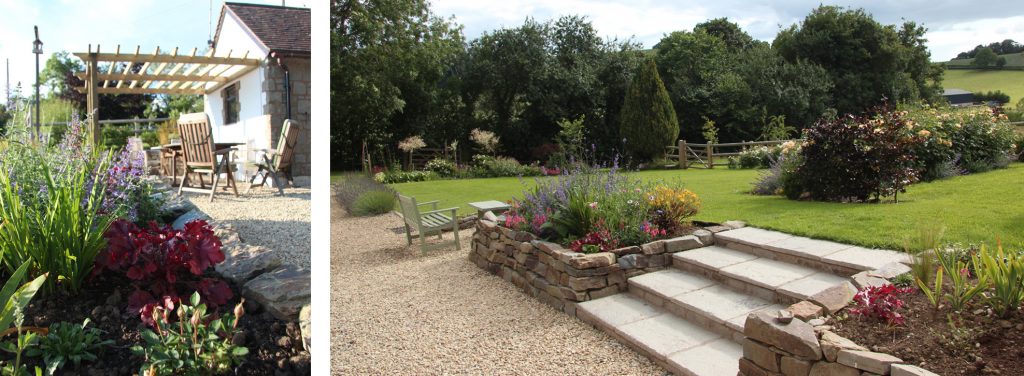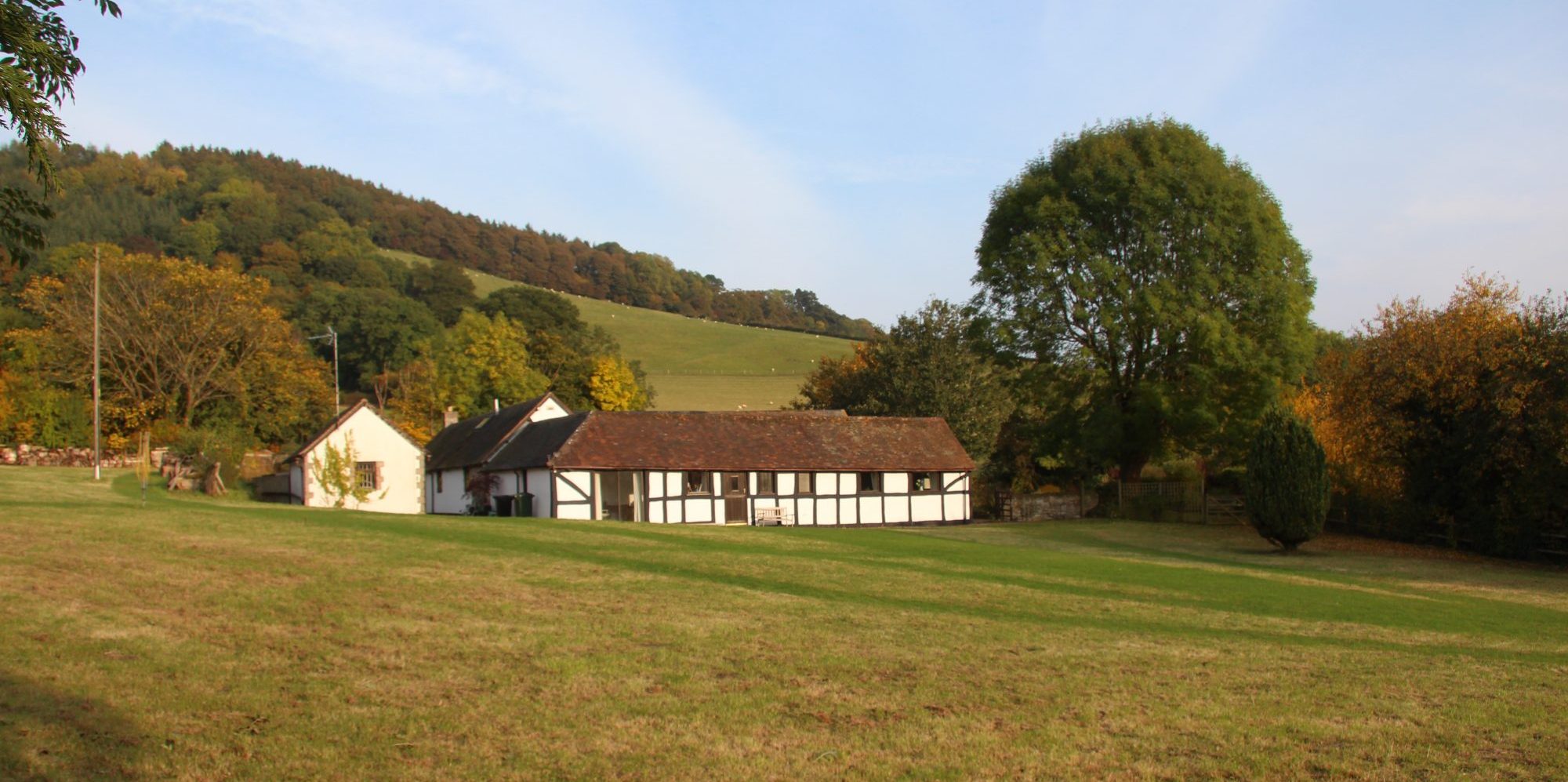A couple of weeks of rest after completing the drystone wall, then we set about constructing a pergola between the end of the outbuilding and the raised bed – the fun bit for my other half. An ivy was removed from the end wall, which was cleaned, cracks filled and then painted brilliant white.
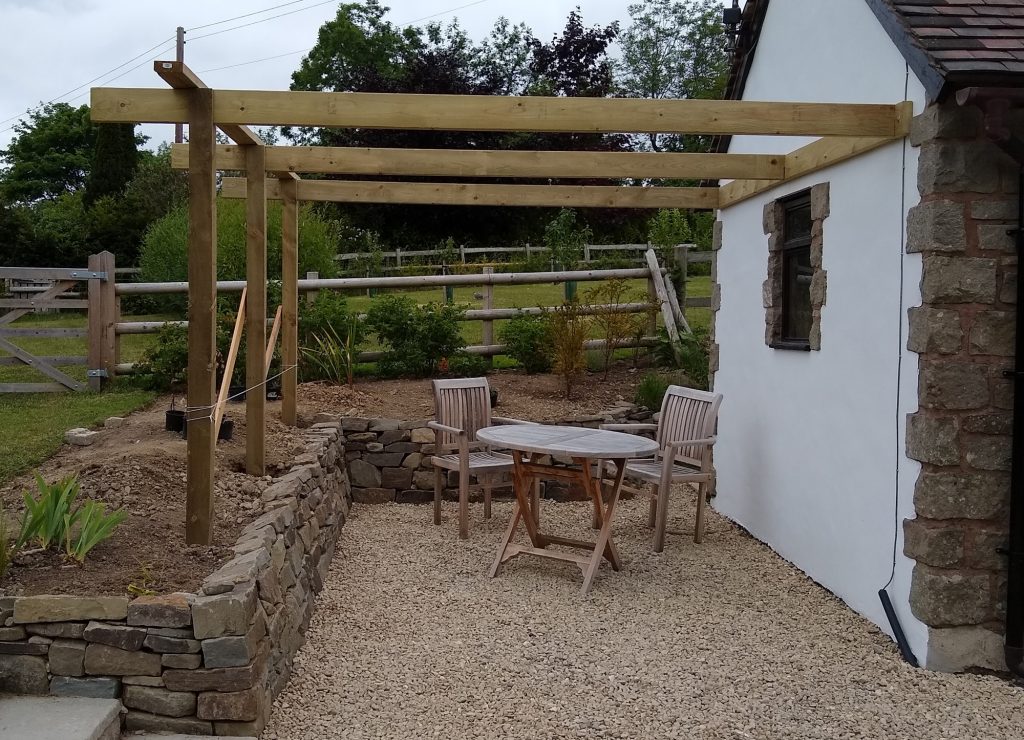
Three uprights were concreted into place within the raised bed, and the main horizontal struts fixed securely – and horizontally – to the outbuilding. The rafters – ten of them – were shaped at both ends, notches cut and then precisely positioned across the rafters. The end of the outbuilding faces west and gets a lot of sun, so we chose wide rafters which we hoped would provide some slated shade. Once erected a bright sunny afternoon showed that it did indeed give some shade.
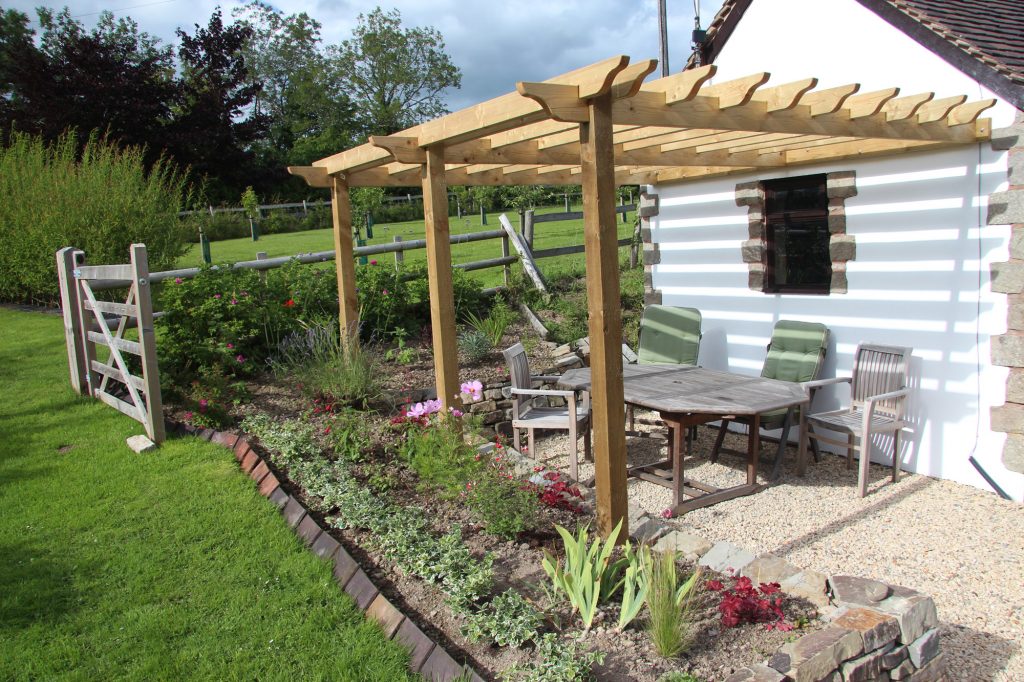
Now for the fun bit for me – planting up the raised bed on the two sides of the seating area. I dug over the clayey soil and included some compost from the huge heap in the south‑west corner of the garden – hopefully lots of nutrients but also, I knew, countless weed seeds. In mid‑summer retail premises were allowed to re‑open, so we visited our favourite nursery and returned with: ten small euonymus ‘Silver Queen’ to provide low hedging by the grass; a choisya Aztec Pearl an evergreen to screen off the rear of the outbuilding; lavatera and berberis shrubs to give some height; and penstemon Southgate Gem, Salvia Hot lips, and a schyzostylis Red Cape lily for bright colour.
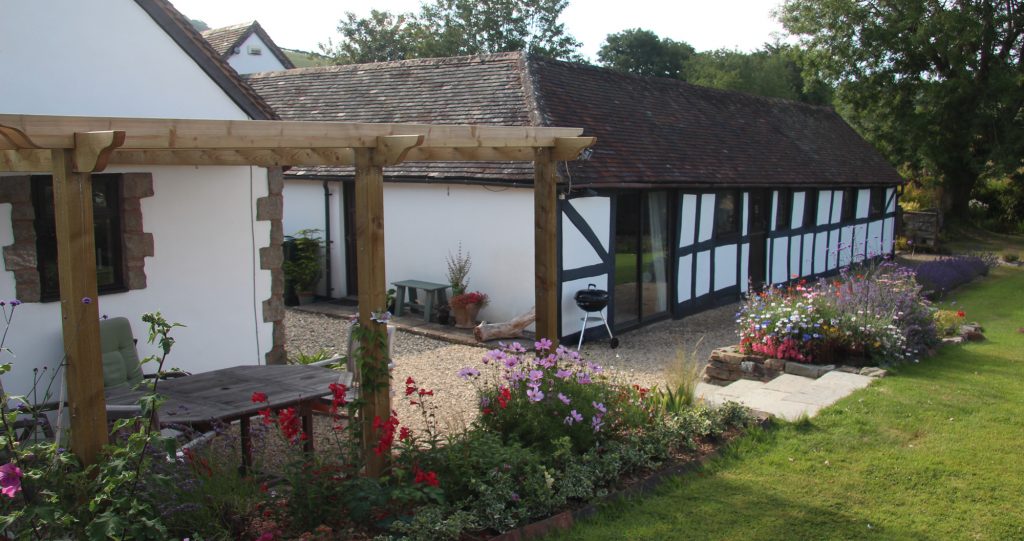
Then came the deliberation about what to get to climb over the pergola. Something with lots of flower, quick growing but not too vigorous. I considered a range of climbers, but inevitably I settled on roses – they grow so well in this garden, and they flower for so long. I made a careful selection and ordered them online – a pale pink climbing rose The Generous Gardener for the front upright and the white climber Iceberg for the rear, both have relatively few thorns, which hopefully will make training them up and across the pergola easier. From our local garden centre, a pink clematis, Empress was selected for the middle upright, with the low growing escallonia Red Dream to shade the roots of the clematis.
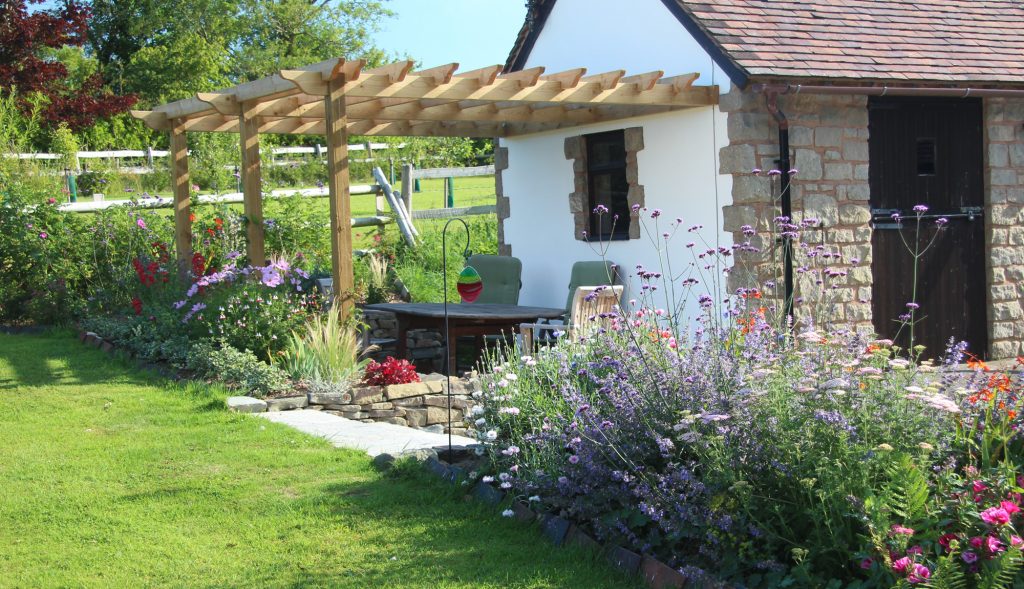
Over the next few weeks, I added various plants from elsewhere in the garden – the floriferous creeping diascia, flag iris rescued from beneath overhanging shrubs, a lavender also crowded out in the terrace, red lobelia Queen Victoria much loved of the rabbits, and the ubiquitous verbena bonariensis plus red valerian, aquilegia, wild marjoram and montbretia. And then plants raised from cuttings, division or seeds: perennial wallflower, salmon coloured heuchera, stipa Mexican feather grass, perennial monarda and annuals pink cosmos and godetia. The planting looked sparse and new.
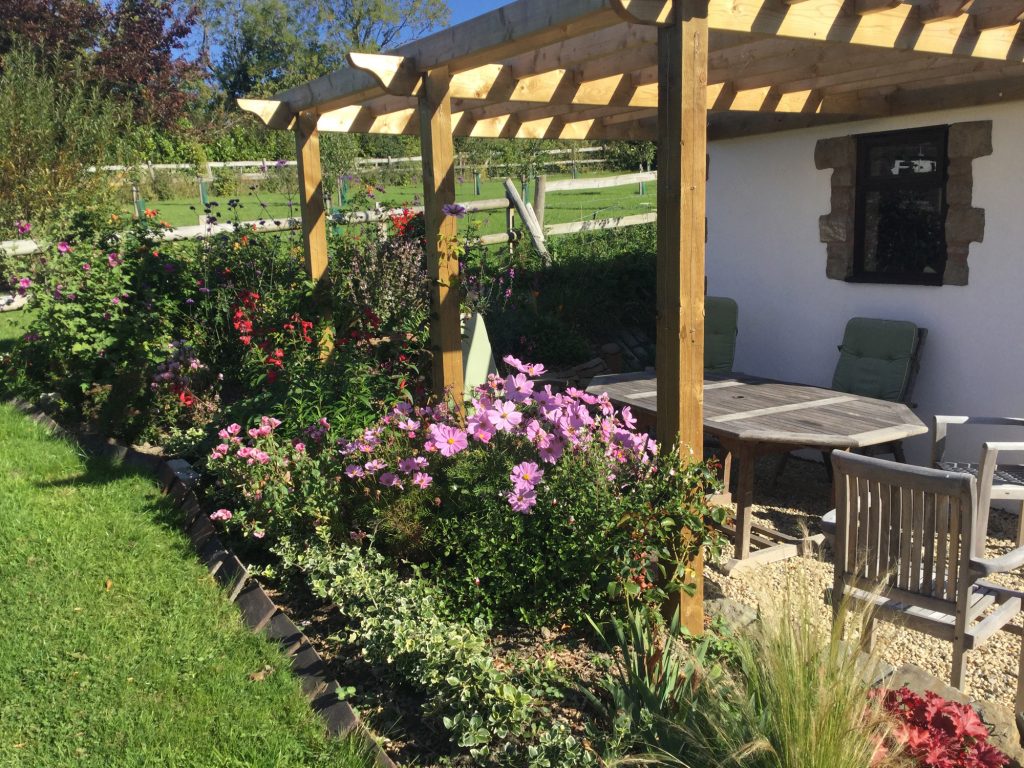
It always astounds me how quickly plants grow in the summer. In just a couple of weeks the bed looked full and we were able to enjoy our new seating area surrounded by different coloured flowers, an abundance of foliage and the pleasure of watching the pollinating insects.
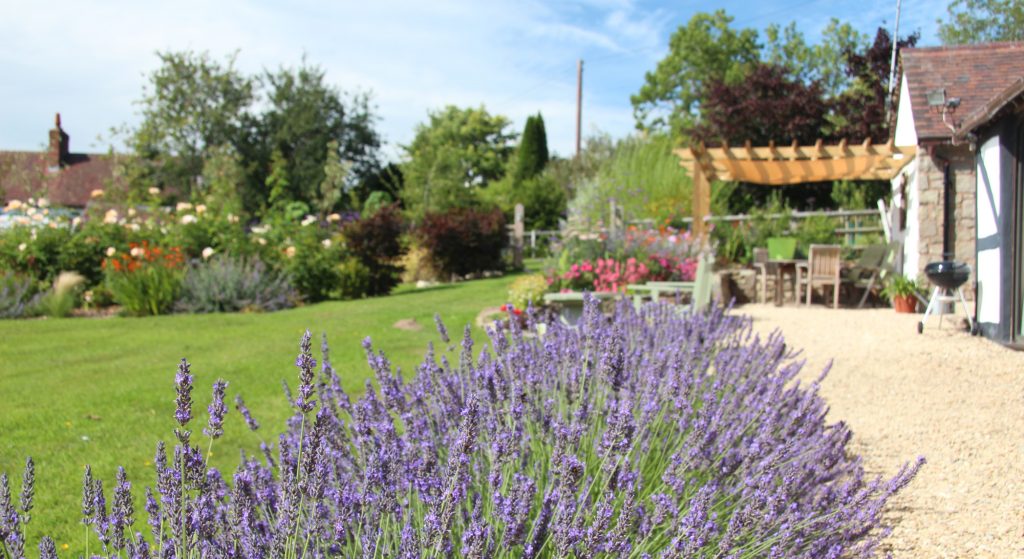
A sun-sail hung beneath the rafters gives more shade when needed, and is easily removed. Sharing it with family and friends has been very limited, as the pandemic restrictions continued. But oh, how fortunate are we to have such a peaceful place in which to stay safe and look out at what we have achieved so far: three years ago there was nothing in this part of the garden other than grass, now there are borders, walls, steps, hedges, shrubs and trees, all nestled within the surrounding hills. Bliss.
